Ready to take to the stage? We’ve rounded up 11 of the best live vocal mics from leading brands, including Shure, AKG, Sennheiser, sE electronics, and more. They’re all designed to improve your vocal performance and cope with the demands of live shows.
Why should I bring my own vocal mic to a gig?
Every singer and vocalist needs their own gigging microphone. Germs and hygiene issues aside, sharing a microphone is often impractical as you’re relying on a venue to have a good quality mic that works.
You may also want a microphone that’s suited to your voice and vocal performance. Unfortunately, not all venues and stages are the same, which is why having your own microphone for live performance is vital. In fact, it’s one of the most essential microphones for a live band to own. We have a whole other article on why condenser mics, in particular, are good for live vocals.
Here are some reasons to bring your own vocal microphone to gigs:
Hygiene – how many people have used the house mic before you?
History – you know exactly where your microphone has been.
Personalisation – do you need to tape your XLR in all the time?
Switch – do you need a switch on your mic?
Professionalism – a quality mic improves and complements your vocal performance.
Sound signature – you may want to use a microphone tailored to your voice with a certain frequency response!
What type of microphone does a singer need in a live setting?
A dynamic microphone with a cardioid polar pattern is the best type of microphone needed in a live show for a singer and vocalist. This is closely followed by a cardioid condenser microphone for those who can stretch their budget.
Dynamic mics may not be as sensitive, but they’re hard-wearing, making them ideal for touring singers. A condenser microphone is a little more sensitive, allowing “breathier” singers or quieter singers to project their vocals. However, a condenser microphone is more susceptible to damage, owing to the sensitivity of the capsule.
Neither are particularly fragile, but a dynamic vocal mic is often suited to a live situation, whereas a condenser is better suited to a recording scenario where you’re not touching it all the time.
In this blog, we’ll predominantly be looking at dynamic microphones with cardioid polar patterns.
The 11 best live vocal mics
Now onto the main event. Each mic in this list has been selected based on the quality of sound, reliability, and the fact that they’re specifically designed for live vocals.
We’ll include some industry-standard live vocal mics as well as some newcomers to the scene. Plus, we’ll span a range of budgets – not everyone has a spare £500+ to blow on a microphone that they’re going to tour with and potentially drop… a lot!
Here we go!
1. Shure SM58 Dynamic Cardioid Vocal Microphone
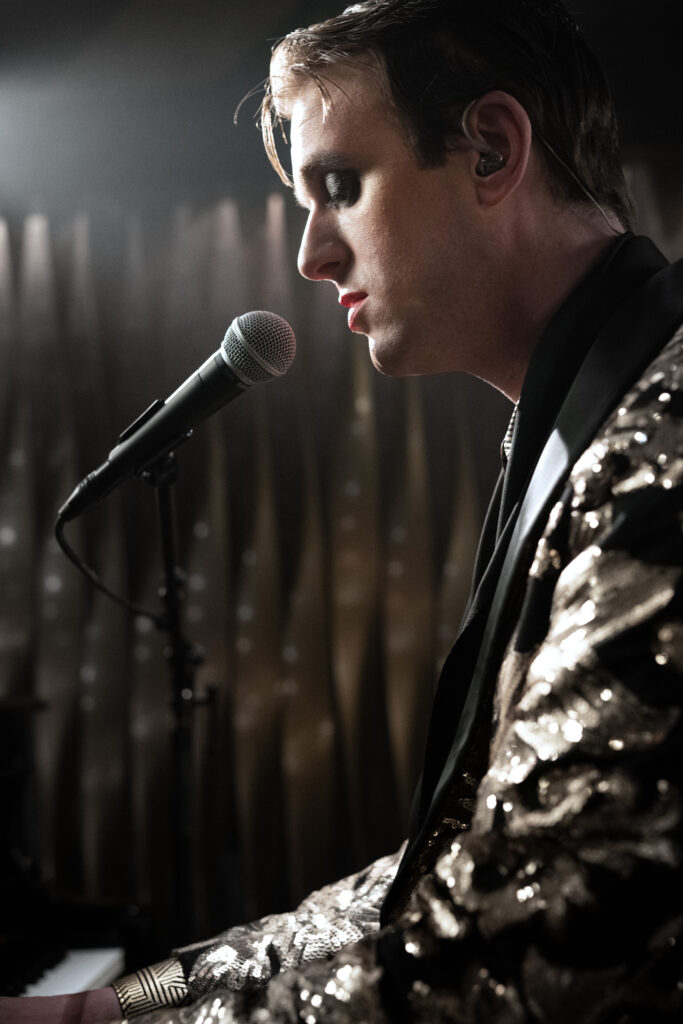 The Shure SM58 is easily the industry-standard live vocal microphone. It has a rich history and impressive fanbase that includes the likes of Rick Rubin, Henry Rollins, Billy Corgan, and Frank Sinatra.
The Shure SM58 is easily the industry-standard live vocal microphone. It has a rich history and impressive fanbase that includes the likes of Rick Rubin, Henry Rollins, Billy Corgan, and Frank Sinatra.
Fun fact: Frank Carter from Gallows/The Rattlesnakes has this mic tattooed on him!
You’ve probably seen this microphone before. It can be found in almost every live venue, sound stage, and festival stage across the world. The SM58 is the first, and likely last, vocal mic you’ll ever need for a live vocal performance.
But why is it so popular?
The Shure SM58 features a dynamic construction which is extremely hardwearing and durable, meaning you can gig with it for decades and never run into any trouble.
Additionally, the cardioid polar pattern rejects off-axis sound, which is ideal if you’re playing in a live band as the sound from the other musicians won’t be picked up by the mic.
The built-in pop shield and filter reduce plosive noises whilst protecting the capsule from damage, making it perfect for gigging vocalists who like to move around. If you drop it, your mic will be fine.
In fact, Shure dropped the SM58 from a seven-storey building and it stayed intact! So, swinging it, throwing it, and jumping around on stage won’t be a problem.
The bass roll-off feature reduces the proximity effect, allowing you to get as close to the mic as you like. This is great for guitarists who sing at the same time, and the boosted mid-range ensures vocal clarity – regardless of your singing style.
The Shure SM58 is built to last and bring out the best in any vocalist. It’s comfortably the best gigging microphone for live vocalists – that’s why it’s so popular!
Shop now | Shure SM58 Dynamic Cardioid Vocal Microphone
2. Sennheiser e845 Vocal Microphone
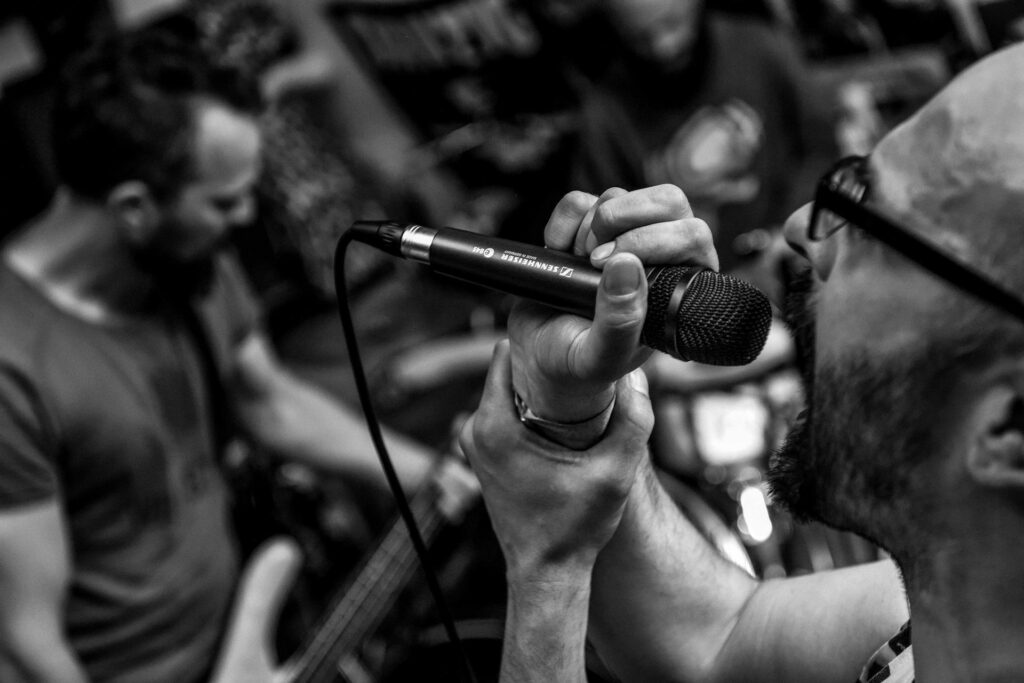 The Sennheiser e845 is another budget-friendly live vocal microphone for gigging singers who care about their vocal delivery.
The Sennheiser e845 is another budget-friendly live vocal microphone for gigging singers who care about their vocal delivery.
This Sennheiser offering makes our list because of its high-frequency range of 40-16000 Hz which ensures it’s forgiving in a live scenario.
It won’t pick up all the little plosives or breathy sounds that you don’t want. And because of this, the mic is ideal for gigging vocalists who like to move around, drummers and guitarists who also sing, and singers who have a louder voice.
The e845 is perfect for bands as well as those in need of a live spoken word mic. Its supercardioid polar pattern provides exceptional off-axis rejection, meaning it won’t pick up anything except your voice. You’ll have pinpoint vocal accuracy.
At way under £100, the e845 is another budget-friendly mic that’s not necessarily “cheap”, but certainly not expensive either.
Shop now | Sennheiser e845 Vocal Microphone
3. Shure Beta 58A Dynamic Microphone
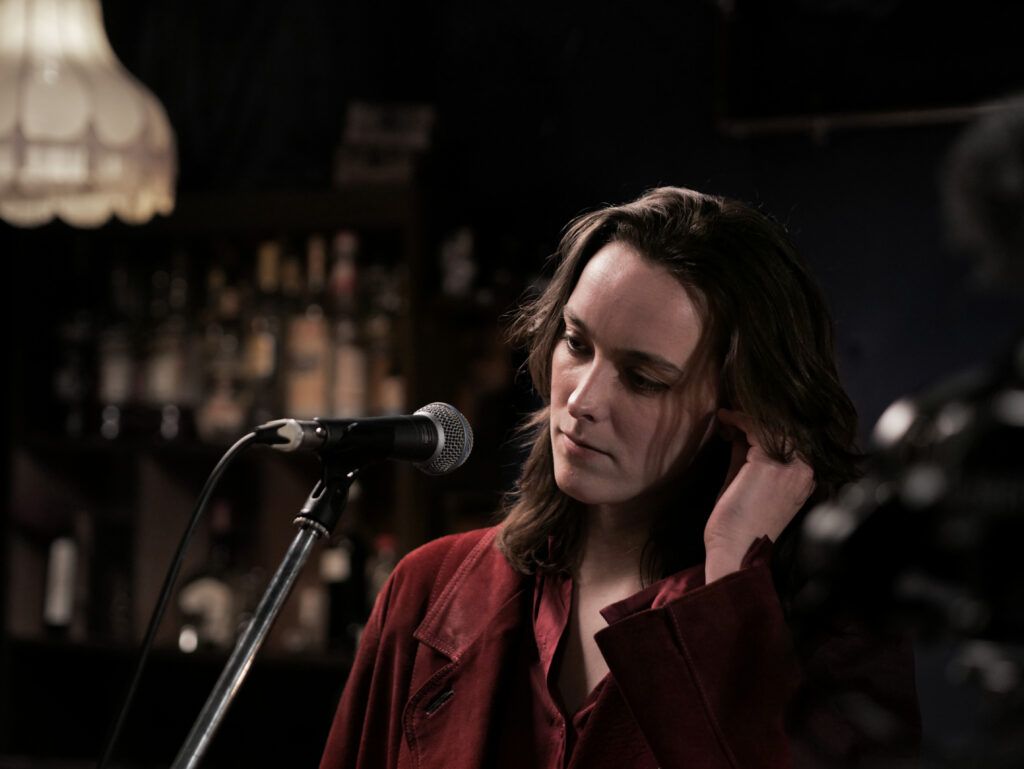 Next up, we have another industry-standard microphone and the logical option for those who never want to upgrade a microphone, ever.
Next up, we have another industry-standard microphone and the logical option for those who never want to upgrade a microphone, ever.
The Shure Beta 58A Dynamic Microphone is the successor to the Shure SM58, and you can read about the differences between the SM58 vs Beta 58A to make your own mind up.
In a nutshell, this microphone provides superior off-axis rejection, is less susceptible to feedback from stage monitors, has higher sensitivity, and runs 4dB hotter than the SM58.
But what makes it one of the best gigging mics for vocalists?
The supercardioid polar pattern is a lot tighter than a cardioid, which means the Shure Beta 58A will reject the sound of your backing band or any other noise around you. This also means you’re less likely to get feedback from the monitors when singing.
The higher sensitivity comes from the neodymium magnet, which explains the slightly higher price tag. It’s more expensive to produce, but absolutely worth the extra investment if you’re a vocalist with a wide frequency range that you want to come through the mix.
An additional 4dB of power also helps quieter or slightly breathier vocals cut through the mix – perfect if you have a similar singing style to Billie Eilish or Cat Power, for example.
Shop now | Shure Beta 58A Dynamic Microphone
4. AKG D5 Dynamic Vocal Microphone
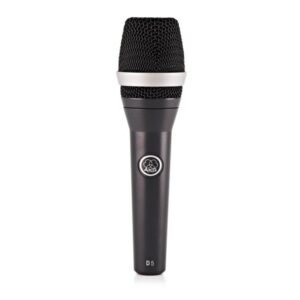 The AKG D5 Dynamic Vocal Microphone is another industry-standard live vocal microphone and one of the best gigging mics for those who sing heavy metal. It’s actually used by Sepultura – so you’re covered if you’re a screamer or guttural singer.
The AKG D5 Dynamic Vocal Microphone is another industry-standard live vocal microphone and one of the best gigging mics for those who sing heavy metal. It’s actually used by Sepultura – so you’re covered if you’re a screamer or guttural singer.
The reason the D5 makes our list is its patented Varimotion diaphragm. This differs from other microphones as it uses a unique laminated material to dampen high resonance peaks, which evens out your sound.
Such a beautifully balanced tone is important as it means you won’t experience sudden jumps in frequency which may cause feedback or unwanted peaks in sound. Your voice will sit nicely in the mix.
The transducer is protected by a sturdy wire-mesh cap, which also acts as a pop shield, to stop plosives and breath sounds making their way into the mix.
It can take extremely high sound pressure levels, whilst the supercardioid polar pattern ensures you can drive the mic as hard as you need to, scream as loud as you want to, and get as close to it as possible without feedback.
Yet another gigging mic for vocals way under the £100 mark that will last a lifetime.
Shop now | AKG D5 Dynamic Vocal Microphone
5. Shure KSM8 Dual Diaphragm Dynamic Microphone
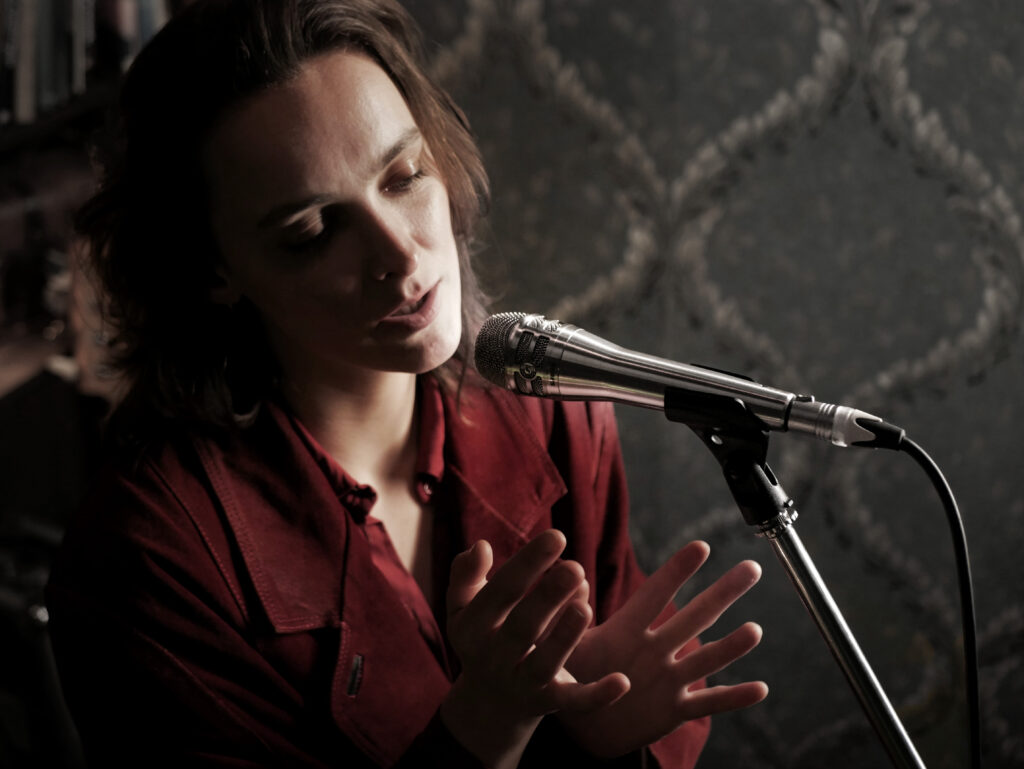 Next, we have the Shure KSM8 Dual Diaphragm Dynamic Microphone. It’s one of the best live vocal microphones for world-class performers in need of crystal clear, recording quality vocals in a live environment.
Next, we have the Shure KSM8 Dual Diaphragm Dynamic Microphone. It’s one of the best live vocal microphones for world-class performers in need of crystal clear, recording quality vocals in a live environment.
This is a dual diaphragm microphone – an important distinction to make as there are two key benefits compared to a single diaphragm.
The dual diaphragm capsule within the Shure KSM8 provides a reduced proximity effect and is less sensitive to pops. In addition, it’s widely accepted as being better for low-frequency characteristics.
Why does this matter?
In a nutshell, this provides the same vocal performance in a studio environment as a condenser microphone with a pop shield – even if you move around. It also ensures all the nuances of the lower frequencies remain when performing.
If you’re singing in a lower key, singing in a choir, or delivering spoken word performances, this microphone is ideal. The two ultra-thin diaphragms ensure that the boominess and proximity effect are all but eradicated.
The dynamic construction with a 40Hz – 16kHz range and cardioid pickup pattern means you can use it to record vocals in the studio too.
Additionally, the dent-resistant carbon-steel grille can handle extensive touring schedules and the pneumatic shock mount protects the diaphragms so you’re going to be able to gig with this microphone comfortably for decades.
This is a mic for all eventualities and applications. If you can extend your budget, it’s totally worth it.
Shop now | Shure KSM8 Dual Diaphragm Dynamic Microphone
6. Neumann KMS 105 Handheld Vocal Condenser Microphone
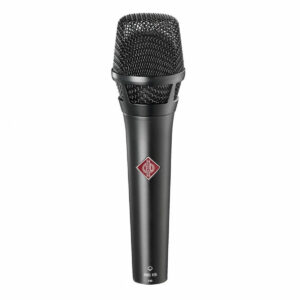 The Neumann KMS 105 has been manufactured with extreme precision, offering brilliant pop protection and low handling noise. It has a supercardioid polar pattern, meaning it attenuates sound from the rear and sides for superb control over the mic.
The Neumann KMS 105 has been manufactured with extreme precision, offering brilliant pop protection and low handling noise. It has a supercardioid polar pattern, meaning it attenuates sound from the rear and sides for superb control over the mic.
Ideal for performing with, the 105 can handle high sound pressure levels up to 150dB before clipping. Combine this with the incredible feedback resistance and you have crystal clear sound for the duration of your gig, even if you’re on the loudest of stages.
The smooth frequency response then produces an airy top end, whilst the fixed low-cut filter combats the proximity effect and gives you a clean, clear bass.
It’s built for practicality and durability, too. With thick-walled housing, the 105 can handle any aggressive performance on stage – the hardened steel grille then ensures the capsule is kept safe.
Plus, thanks to a low output impedance of 50 Ohms, this vocal condenser mic is able to cope with long cable runs up to 300m without transmission loss, whilst the transformerless output minimises electromagnetic interference.
Shop now | Neumann KMS 105 Handheld Vocal Condenser Microphone, Black
7. sE Electronics V7 Dynamic Microphone
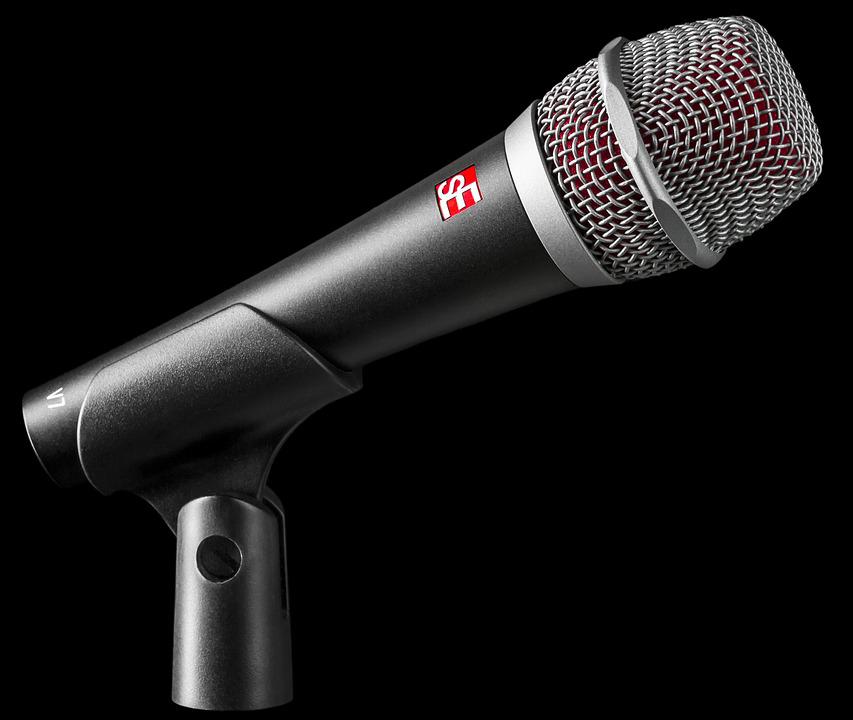 The sE Electronics V7 Dynamic Microphone is the microphone Billie Eilish uses on stage. That alone should make the mic qualify for one of the best of all time considering she’s the biggest star in the world right now.
The sE Electronics V7 Dynamic Microphone is the microphone Billie Eilish uses on stage. That alone should make the mic qualify for one of the best of all time considering she’s the biggest star in the world right now.
A key reason for its popularity, and probably why Billie Eilish uses it for live shows, is its supercardioid polar pattern and frequency range of 40Hz – 19kHz.
The supercardioid pattern focuses on the sound source, which is why you can hear Billie so well when she’s performing her signature sing-speak style of vocal delivery.
Its vast frequency response then captures all the subtle nuances and detail of your vocal performance, whether you’re singing low or screaming your head off.
Plus, it’s not as sensitive on the deeper registers so can handle lower voices before feedback.
The internal windscreen reduces all the unwanted plosive noises, whilst a bevelled spring steel grille protects the neodymium capsule should you knock or drop the mic (pun intended). It’s also corrosion-free, so it’ll look as good as new for years to come.
High-end fidelity, super-sonic accuracy, and a frequency response designed to cater to all styles of vocals… you can see why Billie and many more professional gigging vocalists choose the sE Electronics V7 Dynamic Microphone.
Shop now | sE Electronics V7 Dynamic Microphone
8. Shure Super 55 Deluxe Vocal Microphone
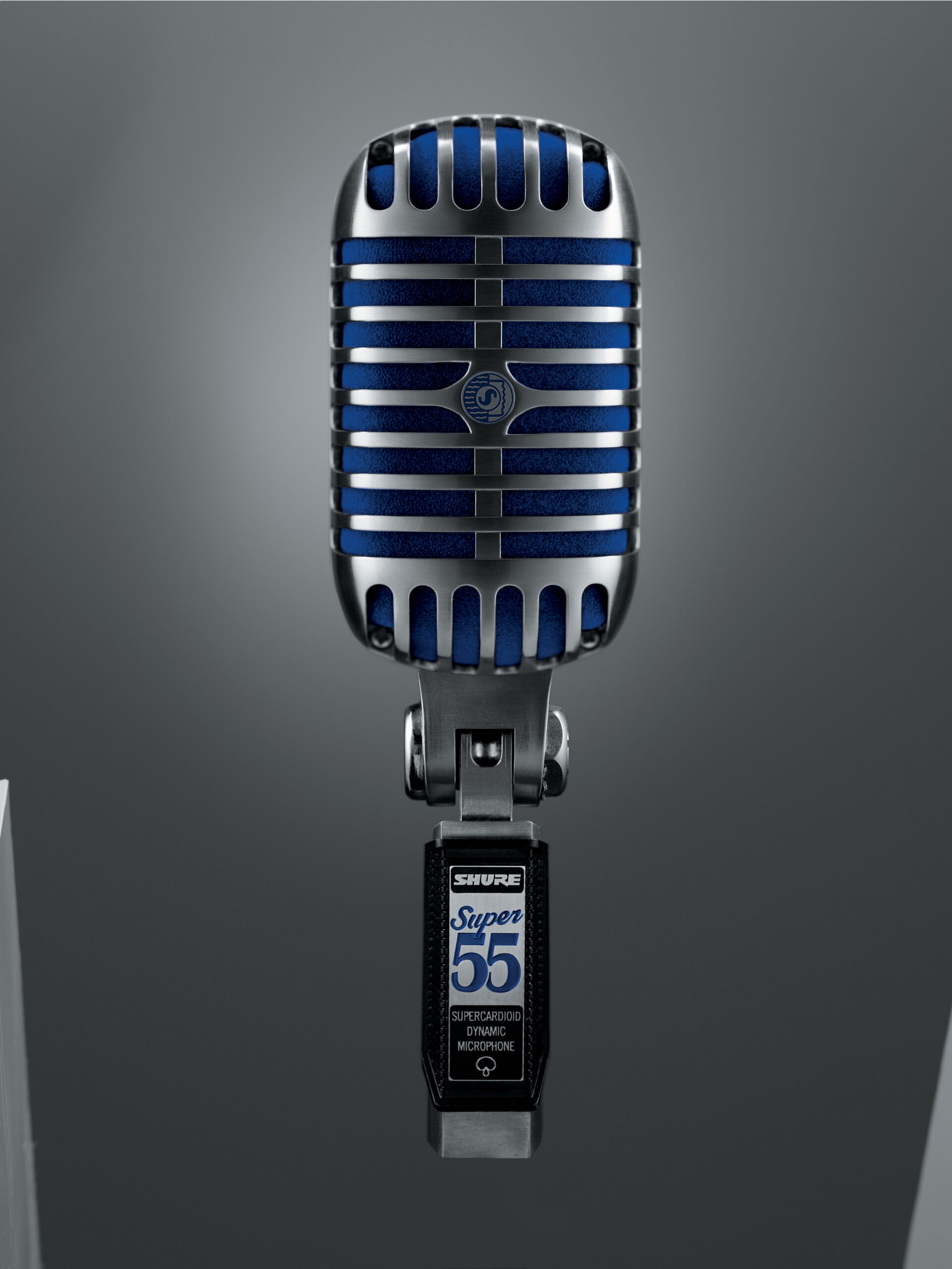 James Hetfield uses a custom black Shure Super 55 Deluxe, Dave Grohl used one in the ‘Best of You’ video, and John Mayer has often favoured this retro-looking mic throughout his career.
James Hetfield uses a custom black Shure Super 55 Deluxe, Dave Grohl used one in the ‘Best of You’ video, and John Mayer has often favoured this retro-looking mic throughout his career.
It was also the microphone made famous by Elvis. Well, technically, he used the Shure Unidyne (unidirectional) Model 55S dynamic microphone. This is the updated, modern version, designed for live vocalists who want to sound good and look cool.
Yes, it looks great. But how does it sound?
The Shure Super 55 Deluxe features a new mic capsule, based on the hugely popular Beta 58A, giving you that reliable, professional-level quality.
Its supercardioid polar pattern rejects off-axis noise, so it’s just your voice coming through the mic. And courtesy of the tailored 60Hz – 17kHz frequency pattern, it’s a rather warm-sounding microphone that is more controlled than most.
The higher 17kHz end of the spectrum gives you some sparkle, which makes it perfect for live vocalists who like to really push the volume and high-end vocal range.
It’s not just volume that vocalists desire, though. Definition is also important. This is a mic designed for live vocalists who need accuracy, with less chance of feedback coming through the monitors.
The lower register isn’t super sensitive; it removes a touch of the bass to help with the proximity effect, leaving you with a crystal-clear vocal sound that punches through the mix.
It’s built like a tank, so dropping the capsule won’t damage it. And you’re sure to turn some heads when you plug this in onstage.
The Shure Super 55 Deluxe is not only one of the best live microphones of all time, but it’s also easily the coolest looking one.
Shop now | Shure Super 55 Deluxe Vocal Microphone
9. Austrian Audio OD505 Active Dynamic Vocal Microphone
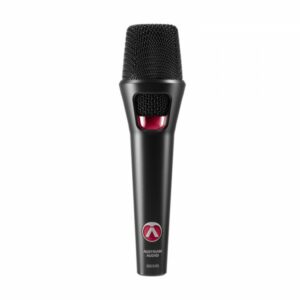 The Austrian Audio OD505 Active Dynamic Vocal Microphone provides condenser-quality sound with the character and rugged ability of a dynamic live microphone.
The Austrian Audio OD505 Active Dynamic Vocal Microphone provides condenser-quality sound with the character and rugged ability of a dynamic live microphone.
If you’re a gigging vocalist playing with a range of musicians, you’ll appreciate the dual-capsule design with a phase-inverted bottom capsule. This is an interesting feature of the OD505 as it effectively eliminates any unwanted handling noise. Vibrational sound is almost non-existent.
The onboard high-pass filter allows you to manually remove excessive rumbling from other on-stage instruments such as drums and bass. This makes it ideal for singers in cover bands, rock bands, and particularly brass bands.
A 3D Pop Noise Diffuser eliminates the unwanted pops and plosives that can sometimes creep in onstage, whilst the supercardioid polar pattern and 35 Hz – 16 kHz frequency range provide very similar quality to that of a studio condenser microphone.
If that wasn’t enough to sway you, the max SPL of 154 means the loudest of singers will be able to sing free of distortion. And it can be used to record guitar cabs, snares, and even brass instruments when you’re not rocking out onstage.
Shop now | Austrian Audio OD505 Active Dynamic Vocal Microphone
10. SubZero SZM-11 Beta Dynamic Vocal Microphone
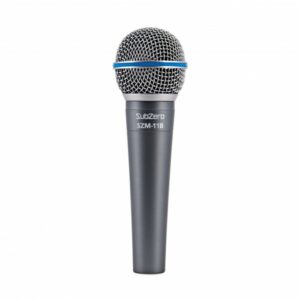 When you’re on a tight budget, yet you don’t want to scrimp on sound quality, the SubZero SZM-11 Beta Dynamic Vocal Microphone is a good option.
When you’re on a tight budget, yet you don’t want to scrimp on sound quality, the SubZero SZM-11 Beta Dynamic Vocal Microphone is a good option.
Obviously, it takes inspiration from another mic on this list – which we won’t name, but it’s a great option for those who simply can’t stretch their budget or who need a gig-quality microphone for open mics, rehearsals, or shared use.
This Subzero offering is a cardioid dynamic mic, so it does a great job of rejecting any unwanted noise behind, in front, and to the side of you.
Boasting a 50Hz – 16kHz frequency response, it’s not as sensitive as the other microphone on this list. That’s OK though as it means it’s very forgiving when it comes to filtering out the unwanted low and high frequency build-ups during a performance.
Your sound engineer will have an easier job of controlling the quality of sound coming through the PA, which means your vocals will sit nicely in the mix.
The heavy-duty mesh grille and protective foam insert then protect the capsule from knocks and bumps along the way as you hone your skills on the mic.
This is one of the best budget live vocal microphones available today that actually sounds good!
Shop now | SubZero SZM-11 Beta Dynamic Vocal Microphone
11. 3 Piece Microphone Set by Gear4music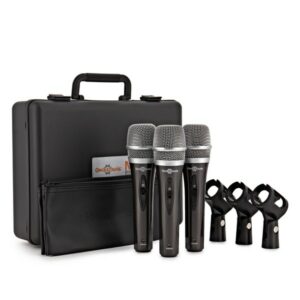
Last but by no means least, we have the 3 Piece Microphone Set by Gear4music. This microphone package is a great way for venue owners, rehearsal rooms, and even church bands to kit out their bands with live vocal microphones on a budget.
The 80Hz-12KHz range is ideal for beginner vocalists honing their craft and bands in need of their own mic (for reasons we mentioned above). Their slightly-reduced sensitivity means they’re easier to control using a PA system, with less mixing of high and low frequencies required.
The onboard switches are ideal for killing the sound mid-set or during a break, and the high-grade ABS plastic finish means they won’t break on you the first time you drop them – trust me, you’ll drop a mic one day!
If you’re on a tight budget and need a range of mics for live performances, in schools or public speaking, this is a great option.
Shop now | 3 Piece Microphone Set by Gear4music
Final thoughts on live microphones
As always, I recommend buying a mic that stretches your budget just a little – as the extra investment almost always pays off in the long run. Or at the very least, aim for an industry-standard live vocal mic widely used by venue and performers you respect.
Fortunately, all these brands are widely respected in the world of live performance. They’ll provide you with quality sound. At the end of the day, as long as you choose dynamic mic with a cardioid polar pattern, you’ll be onto a winner.
Try as many as you can throughout your career and see what works for you. Music is a journey, and choosing a mic should be too.
Good luck!
Post a comment below and let us know if you have any tips, questions, or microphone recommendations we may have missed!

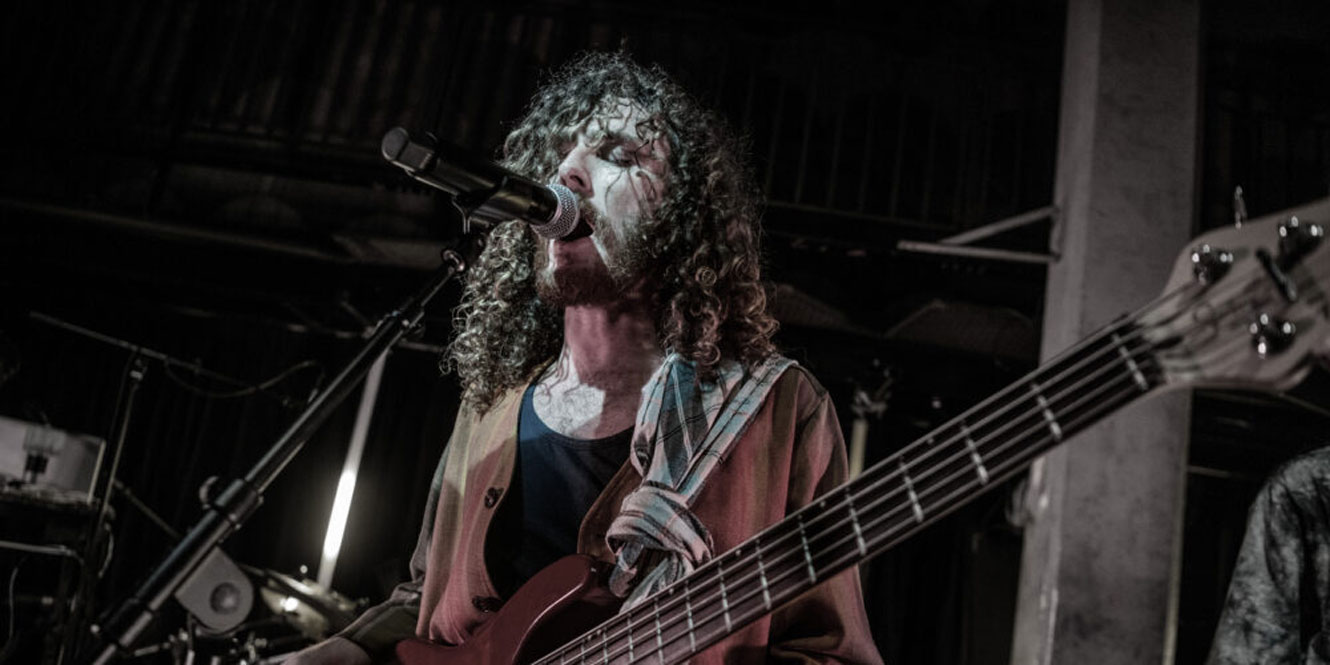












not mentioning the Neumann KMS 105 is a huge omission.
I’m sorry but I believe that the Telefunken M80 is by far superior over the Shure SM 58.
Sennheiser e935. The gold standard.
Here here !!!